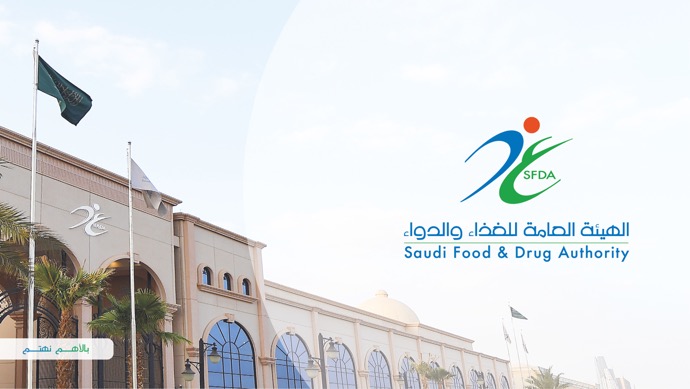The promise of patent linkage
Robust intellectual property (IP) protection is vital for biopharmaceutical innovation. It provides the incentives and business certainty needed to attract and sustain long-term investment in prevention, treatments and cures. IP rights have little value without enforcement, however.
Trademark infringements by counterfeit medicines are common and well understood, and high on the public and policymakers’ radar screen. Other forms of IP rights abrogation are less visible but no less corrosive to the delicate innovation ecosystem.
In many countries, for instance, drug regulatory authorities are not required to – and do not – notify innovators when competitors apply for approval to market a generic version of a medicine or vaccine.
This often leads to the marketing of generic medicines while the patent of its corresponding originator medicine is still in place, in effect reducing its value to zero and undermining the very rationale of protecting IP in the first place. Unsure of the effectiveness of local IP protection, foreign and local investment looks elsewhere. Patients suffer too as companies become cautious about investing in launching new medicines in countries where IP protection is uncertain.
For forward-looking nations keen to develop their own innovative biopharmaceutical industries, this situation is increasingly untenable. In response, the last decade has seen more countries introducing into their domestic legislation early resolution mechanisms for patent disputes, which clarify the link between the patent status of medicines and the regulatory approval of generic equivalents.
The objective of such legislation is to promote innovation and investment by giving inventors more certainty over their patent rights, while giving generic manufacturers greater clarity over their freedom to operate in the marketplace, heading off potential time-consuming and costly patent litigation.
objective of such legislation is to promote innovation and investment by giving inventors more certainty over their patent rights, while giving generic manufacturers greater clarity over their freedom to operate in the marketplace
Gulf Cooperation Council countries look for life science growth
Governments throughout the Gulf Cooperation Council are looking to boost local investment and growth of knowledge-based industries to underpin the economic transition away from oil. The biopharmaceutical industry, they hope, will play a key role.
The Saudi government for instance has placed innovation at the heart of both Vision 2030 and National Transformation Program 2020 with the National Industrial Development and Logistics Program (NIDLP) tasked with promoting Research and Development (R&D) in the life science sector.
As part of this agenda, steps have been taken to improve the protection of intellectual property rights vital to biopharmaceutical innovation, with the recently-formed Saudi Authority for Intellectual Property (SAIP) pursuing an ambitious reform agenda including numerous examination work-sharing agreements with foreign patent offices, and increased awareness-raising and consultation with rights holders.
Over in the UAE, the government has recently launched two innovation-focused national plans — the Dubai Industrial Strategy 2030 and Abu Dhabi Vision 2030 — that have singled out the biopharmaceutical sector as a development priority.
This agenda has seen positive reforms to company ownership laws relating foreign investors, as well as a programme of capacity building and awareness raising on the importance of intellectual property rights. The UAE hopes its generics-focused biopharmaceutical industry will move up the value chain by attracting more multinationals to develop and produce innovative medicines locally.
Industrial policy tensions between innovation and generic industries
The UAE has achieved a great deal of success and is now the leading investment centre for the international life sciences industry through comprehensive reforms to its regulatory, tax and intellectual property systems over recent years. Despite official support for innovation, other Gulf neighbours seem to be directing their policy efforts at reinforcing the generics-based status quo.
Saudi Arabia, the Gulf’s largest pharmaceutical market, has introduced a number of incentives to increase the output of its local industry which has emerged as an important regional supplier of generic medicines.
The prioritisation of generic drug production, while useful, can’t offer the long-term economic impact of drug innovation
The prioritisation of generic drug production, while useful, can’t offer the long-term economic impact of drug innovation. It is a business of razor-thin margins, and essentially involves the replication of products that have been invented, designed and manufactured elsewhere. As such, it does not generate the longer-term economic value, tax revenues and attractive, high-value jobs that R&D-intensive originator companies can.

In some cases, governments in the region actively discriminate against innovative companies in order to advantage local generic producers, raising questions about the seriousness of local ambitions to transition towards a more knowledge-based economy.
Regional governments expect the life science industry to play a key role in the economic transition away from oil
Routine patent infringements by generic manufacturers
Investors have watched with concern over the last several years as authorities in Saudi Arabia have disregarded intellectual property rights by granting marketing authorisation and in some cases procuring generic versions of drugs that are on patent.
In April 2017, for instance, the Saudi Food and Drug Agency (SFDFA) granted marketing approval for a local company to manufacture a patented Hepatitis C drug – a clear breach of patent rights.
Likewise, the SDFA allowed in 2016 local companies to manufacture generic versions of a separate Hepatitis C drug – potentially contrary to World Trade Organisation rules surrounding the protection of clinical test data, itself an important intellectual property right.
The National Unified Procurement Company for Medical Supplies, also overseen by the Saudi Ministry of Health, reportedly awarded national tenders to some of these domestic companies, even though the generic medicines concerned were violating existing patents.
This widespread infringement of the intellectual property rights of originators impacts their earnings by introducing price competition earlier than the patent system intends.
It also sends out a broader signal that the rule of law is weaker in Saudi Arabia than elsewhere, with the authorities prepared to facilitate the infringement of intellectual property rights. This impacts investment not just in pharmaceuticals and biotechnology, but in other sectors, too.
Why patent linkage matters
The actions by the Saudi authorities are surprising given the various national development plans intended to transition their countries towards a more knowledge-based structure. They are doubly surprising given that the Kingdom has clear provisions in its domestic IP laws to reduce the numbers of patent-infringing drugs being approved by the national drug regulator and reimbursed by the public health system – so-called “patent linkage” or early dispute resolution mechanisms.
Such mechanisms link the patent status of a medicine and regulatory approval of generic, preventing the latter from gaining regulatory approval while the patent on the original version is still valid.
At a basic level, linking these two elements means that generic versions cannot gain regulatory approval while the patent on the original version is still valid. The aim is to protect the IP rights and investment of the original innovator, while allowing the generic manufacturer to avoid becoming embroiled in costly legal disputes.
Perhaps surprisingly, no such link exists in many jurisdictions. While governments are responsible both for granting patents on pharmaceutical inventions and for approving pharmaceutical products for market entry, the reality is that these two functions are often performed by separate government agencies. Early resolution mechanisms involving patent linkage set out to redress this disconnect.
Beyond this fundamental aspect, early resolution mechanisms can take different forms; at their simplest, they may require that patent owners are informed when a drug manufacturer applies for regulatory approval of a generic or biosimilar version of the product protected by the owner’s patent. Stronger, more complex schemes might prohibit market approval of the generic version prior to the expiration or legal opportunity to determine the validity of the originator’s patent.
Benefits of patent linkage
Reducing the need for expensive and time-consuming patent litigation
Litigation brought about by the premature market entry of a generic medicine, or the challenging of an existing patent by a generic manufacturer, are expensive and lengthy processes that are not undertaken lightly by either party. Early dispute resolution mechanisms such as patent linkage ensure any litigation takes place earlier, therefore giving the originator a fair opportunity to secure a return on its long-term, high-risk investments in research and development, which can run into billions of dollars for some of the latest biologic treatments. Crucially, this helps to incentivise future investment in innovative drug development.
Reduced risk and cost for generic manufacturers
For generic manufacturers too, such a mechanism can give competitive advantages and assist them in avoiding infringement. It enhances predictability and transparency around the regulatory approval process by highlighting third-party patents that could prove an impediment to a generic company’s business strategy. This means that the generic manufacturer can reduce risk and allocate resources to products less likely to be halted by litigation, thereby creating efficiencies that impact positively on its bottom line.
Moreover, under the US system – and similar schemes in the Republic of Korea and Taiwan – generic companies are incentivised to challenge patents they suspect of being invalid, as the first to file a successful invalidation action is granted a period of market exclusivity to sell their generic version of the drug. This in turn puts encourages innovator companies to ensure that the patents they file are of a high quality.

What of fears that patent linkage law disadvantages the local biosimilar industries, which manufacture similar versions of original biologic drugs? The South Korean experience suggests such fears are unfounded. It has a patent linkage system covering biologics, yet manufactures two in three biosimilars sold worldwide, according to Business Korea. South Korea’s exports of biosimilars grew by 29% in 2017 to US$1.37bn, accounting for 34% of its total pharmaceutical exports.
a thriving biosimilars industry can emerge within a strong intellectual property framework, and patent linkage is no threat
This suggests a thriving biosimilars industry can emerge within a strong intellectual property framework, and patent linkage is no threat. This view is likely shared by the Chinese government, currently implementing its own patent linkage system.
Encouraging innovation amongst generic manufacturers
Patent linkage systems add certainty into the drugs market for generic manufacturers. The applicant for a generic drug licence is informed of any patents relating to their product before it launches. This listing of on-patent medicines allows follow-on drug makers to navigate the competitive landscape to avoid infringement – and to direct their validity challenges more precisely and efficiently should they see an opportunity to do so.
Moreover, this ability to understand the relevant patent landscape prior to market entry encourages generic manufacturers to innovate themselves, encouraging R&D and design-around efforts — moving the entire generic industry up the value chain. The knock-on effect of more R&D activity in both originator and generic camps would also lead to the development of ancillary services and increase opportunities for foreign investors. Ultimately, that enhances industrial strength and international competitiveness.
Access to medicines
Patient also benefit as they no longer run the risk of having to switch back and forth between different treatments that could have different side-effects and efficacy depending on the outcome of IP battles between innovators and generics.
It would be imprudent to think that patent linkage can solve perceived problems with drug pricing and healthcare delivery. What it can help to achieve, however, is a pharmaceutical innovation ecosystem where innovators are fairly rewarded for their R&D investments and where generic drugs can enter the market in a less risky and more efficient manner.And having a well-functioning patent linkage system is no barrier to access to generic medicines: the United States, for instance, has long operated a patent linkage system and also has one of the highest levels of generic market penetration in the world. In Korea, which implemented a patent linkage system in 2015, there is no evidence that it has delayed generic entry: on the contrary patent linkage has encouraged patent litigations mounted by generic companies to happen earlier, with competitors racing to be the first to challenge.
There is no evidence Korea’s 2015 introduction of patent linkage delayed access to medicines – quite the opposite in fact
Patent linkage: an emerging global IP standard
Many countries recognise the long-term damage caused to innovation and economic competitiveness caused by allowing patent infringing medicines to be made publicly available. Increasingly, early resolution mechanisms are becoming a global standard in the protection of IP rights.
The United States first introduced an early resolution mechanism for patent disputes with the passage of 1984’s Drug Price Competition and Patent Term Restoration Act (otherwise known as the Hatch-Waxman Act after the two US Congressmen who sponsored the bill). Under the US system, the country’s Food and Drug Administration (FDA) maintains an online database of patents belonging to originator companies (Orange Book): manufacturers that seek marketing approval for generic versions must notify the rights-holding company that it is doing so. Where the originator believes that their valid patent(s) would be infringed by the generic product, it may file a patent infringement lawsuit, and the FDA must refrain from granting marketing authorisation to the generic applicant for up to 30 months.

Australia, Singapore and Canada have similar systems, while Taiwan introduced patent linkage in 2019. China’s new patent linkage system became operational in June 2021, as part of wider public policy reforms to encourage biopharmaceutical innovation.
Other countries entering into Free Trade Agreements (FTAs) with the United States have also upgraded (or plan to upgrade) their IP systems to provide some form of early resolution mechanism. According to a March 2013 paper by Ravikant Bhardwaj, K D Raju and M Padmavati of the Indian Institutes of Technology Kharagpur, in 2011 alone no fewer than 16 nations had FTAs with the United States which required them, explicitly or implicitly, to provide early dispute resolution mechanisms, including Australia, Korea and Singapore.
However, the emergence of patent linkage as a global IP norm is far from dependent on US trade policy. Several FTAs to which the United States is not a party – such as those between Colombia and Mexico, and Japan and Thailand – include provisions for early resolution mechanisms.
Other jurisdictions have adopted patent linkage as part of their commitments to the Comprehensive Trans-Pacific Partnership (TPP) including New Zealand, Malaysia, Brunei and Vietnam.
Patent linkage in the Middle East
Authorities in the Gulf region also understand the importance of patent linkage, with all Gulf States with the exception of Qatar implementing related systems, with the first generic manufacturer market generally required to submit to regulatory authorities a Freedom To Operate search report issued by the national and regional Gulf Cooperation Council patent offices.
In Saudi Arabia, a patent linkage system has been in place since 2013, with generic manufacturers required to obtain and submit letters from the Saudi Patent Office, and the Gulf Cooperation Council Patent Office (GCC PO) disclosing the existence or absence of relevant patent(s). Reforms are underway for a modified system more closely resembling the US Orange Book model due to come into force in 2022 or 2023.
There are still some areas of uncertainty around the upcoming reforms, such as whether they will include biologic medicines; if patent holders will be able have their patents listed in the Saudi “Orange Book” at any time prior to first generic marketing authorisation, as happens in the US; and ensuring there are clearly defined rules around how a patent can be rejected from inclusion on the list, to promote certainty and prevent arbitrary decisions by governmental authorities. If these concerns are addressed, Saudi’s new patent linkage system and the certainty it brings to the patent system will help ensure that the life science sector can make a meaningful contribution to the innovation ambitions that form the basis of Vision 2030.
Conclusion
While the originator and generic pharmaceutical industries are portrayed as at loggerheads, they are, in fact, symbiotic. Generic manufacturers would not have a viable business model without the investments made in research and development by originators; the competitive challenge presented by the expiry of patents and generic entry keeps the originators on their toes, encouraging them to continue innovating and creating new drugs.
When the two sides do come into conflict, it is usually because an originator suspects that generic competitor has infringed one of its patents. Intellectual property disputes of this type are expensive and time consuming, and sap resources that could be better spent on further research and development.
Early resolution mechanisms for patent disputes aim to bring efficiency and clarity to this situation. Moreover, an environment where patent owners feel confident that their IP rights are respected and enforceable is one in which they will be more comfortable investing. That in turn drives knowledge-based economic development and demonstrates why countries pursuing growth should embrace patent linkage. This is a lesson learned by the Gulf’s life science leader, the UAE. Regional neighbours should follow.


